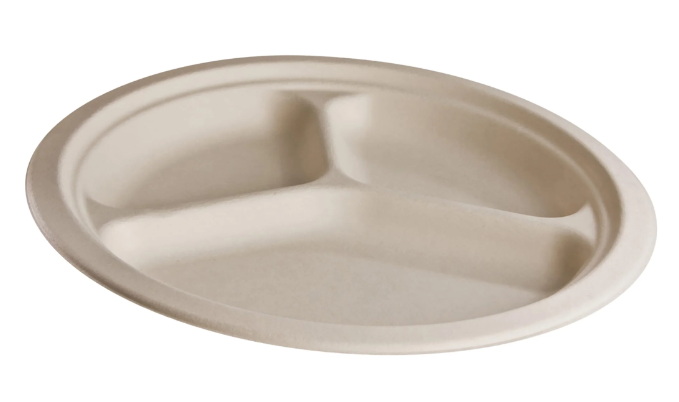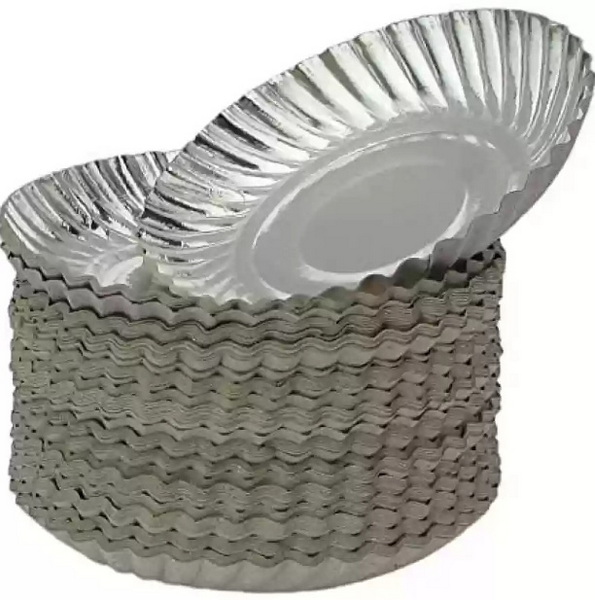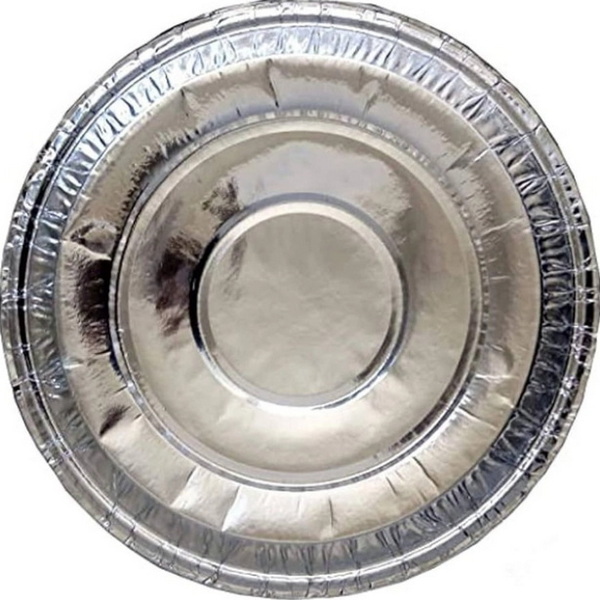
Content Menu
● Introduction to Three-Portion Disposable Plates
>> Benefits of Using Three-Portion Disposable Plates
● How Three-Portion Disposable Plates Can Help Control Calorie Intake
>> Calorie Management
>> Size of Three-Portion Disposable Plates and Calories
>> Practical Tips for Using Three-Portion Disposable Plates
● Comparison with Portion Control Containers
>> Advantages of Portion Control Containers
>> Disadvantages of Portion Control Containers
● Benefits of Disposable Plates Over Traditional Tableware
● Eco-Friendly Options
● Tips for Choosing the Right Disposable Plates
● Conclusion
● FAQ
>> 1. What are the typical sizes of three-portion disposable plates?
>> 2. How do three-portion disposable plates help with calorie control?
>> 3. What materials are three-portion disposable plates usually made from?
>> 4. Can three-portion disposable plates be used for specific dietary needs?
>> 5. Are three-portion disposable plates suitable for post-bariatric surgery patients?
● Citations:
In today's fast-paced world, managing calorie intake effectively is crucial for maintaining a healthy lifestyle. One innovative tool that has gained attention for its potential to aid in calorie control is the three-portion disposable plate. This article will delve into the concept of these plates, their design, benefits, and how they can assist in managing calorie intake.

Introduction to Three-Portion Disposable Plates
Three-portion disposable plates are designed with three separate compartments, allowing users to easily separate different food groups during meals. These plates are typically made from eco-friendly materials such as sugarcane bagasse or bamboo, making them biodegradable and compostable. The compartments are usually divided to accommodate vegetables, proteins, and carbohydrates, promoting balanced eating habits.
Benefits of Using Three-Portion Disposable Plates
1. Portion Control: These plates provide visual cues that help users manage portion sizes effectively. By allocating specific areas for different food groups, they prevent overeating and ensure a balanced meal.
2. Nutrient Balance: The compartmentalized design encourages users to include a variety of food groups in their meals, promoting nutrient balance and reducing the risk of nutrient deficiencies.
3. Mindful Eating: The visual separation of food groups encourages mindful eating habits, helping users recognize when they are full and preventing unnecessary snacking.
4. Convenience: Disposable plates are convenient for events, picnics, or daily use, offering an easy cleanup without the need for washing.
5. Sustainability: Made from renewable resources, these plates are environmentally friendly, reducing plastic waste and supporting sustainable living practices.
How Three-Portion Disposable Plates Can Help Control Calorie Intake
Calorie Management
Controlling calorie intake is essential for weight management and overall health. Three-portion disposable plates can help by ensuring that meals are balanced and portioned correctly. Here's how:
- Reduced Overeating: By visually dividing the plate into sections, users are less likely to overeat, as they can see the appropriate amount of each food group they should consume.
- Balanced Meals: The plates encourage users to include a mix of vegetables, proteins, and carbohydrates, which helps maintain a balanced calorie intake. Vegetables are generally low in calories but high in fiber, while proteins and complex carbohydrates provide sustained energy without excessive calorie intake.
- Mindful Eating Practices: The visual cues on these plates promote mindful eating, encouraging users to eat slowly and recognize when they are full, further aiding in calorie control.
Size of Three-Portion Disposable Plates and Calories
The size of three-portion disposable plates can vary, but common sizes include 9-inch and 10-inch diameters. The calorie intake managed by these plates depends on the specific foods placed in each compartment. For example, filling half the plate with vegetables (low in calories), one-quarter with lean protein, and one-quarter with complex carbohydrates can help maintain a balanced calorie intake.
Practical Tips for Using Three-Portion Disposable Plates
1. Fill Half with Vegetables: Non-starchy vegetables like broccoli and leafy greens are low in calories but high in fiber, helping you feel full.
2. Prioritize Lean Proteins: Include lean protein sources like chicken or tofu to maintain muscle mass and satiety.
3. Choose Complex Carbohydrates: Whole grains or sweet potatoes provide sustained energy without causing blood sugar spikes.
4. Mind Your Liquids: Avoid drinking large amounts of liquid during meals to prevent filling your stomach too quickly.
5. Portion Snacks: Apply the same principles to snacks, focusing on protein and veggies.

Comparison with Portion Control Containers
Portion control containers are another popular tool for managing calorie intake. These containers are color-coded and designed to hold specific amounts of different food groups, similar to the compartments on three-portion disposable plates. However, they are typically reusable and require more maintenance than disposable plates.
Advantages of Portion Control Containers
- Reusable: Can be used multiple times, reducing waste.
- Customizable: Can be adjusted based on individual calorie needs and dietary preferences.
- Cost-Effective: Long-term savings compared to disposable options.
Disadvantages of Portion Control Containers
- Maintenance: Requires regular washing and storage.
- Initial Cost: Higher upfront cost compared to disposable plates.
Benefits of Disposable Plates Over Traditional Tableware
Disposable plates offer several benefits over traditional reusable tableware:
1. Cost-Effectiveness: Generally cheaper, especially when purchased in bulk.
2. Hygiene and Safety: Eliminates the risk of cross-contamination and foodborne illnesses.
3. Convenience: Easy cleanup with no need for washing or storage.
4. Versatility: Available in various styles and designs to match different event themes.
5. Reduced Breakage: No risk of damaging expensive dishes.
Eco-Friendly Options
Many disposable plates are made from eco-friendly materials such as sugarcane bagasse or bamboo, which are biodegradable and compostable. These plates reduce plastic waste and support sustainable living practices, making them a preferable choice for environmentally conscious consumers.
Tips for Choosing the Right Disposable Plates
1. Material: Opt for eco-friendly materials like sugarcane or bamboo.
2. Size: Choose plates that fit your meal size needs, such as 9-inch or 10-inch options.
3. Design: Select plates with compartments to aid in portion control.
4. Durability: Ensure the plates are sturdy enough to hold various food types without leakage.
Conclusion
Three-portion disposable plates are a practical tool for managing calorie intake by promoting balanced meals and mindful eating practices. Their eco-friendly design makes them suitable for various occasions, from daily meals to events. By incorporating these plates into your meal routine, you can effectively control your calorie intake and support a healthier lifestyle.

FAQ
1. What are the typical sizes of three-portion disposable plates?
Three-portion disposable plates typically come in sizes ranging from 9 inches to 10 inches in diameter, providing ample space for portioning meals.
2. How do three-portion disposable plates help with calorie control?
These plates help control calorie intake by visually guiding users to maintain balanced meals, reducing overeating, and promoting mindful eating habits.
3. What materials are three-portion disposable plates usually made from?
They are often made from eco-friendly materials such as sugarcane bagasse or bamboo, which are biodegradable and compostable.
4. Can three-portion disposable plates be used for specific dietary needs?
Yes, they can be adapted for various dietary needs by adjusting the portion sizes and food groups in each compartment, making them suitable for heart-healthy, diabetes-friendly, or plant-based diets.
5. Are three-portion disposable plates suitable for post-bariatric surgery patients?
While standard three-portion plates are beneficial for general portion control, bariatric patients may require specialized plates with smaller compartments to adhere to post-surgery dietary guidelines.
Citations:
[1] https://www.kimecopak.ca/products/compostable-3-compartment-round-plates
[2] https://www.cleaneatzkitchen.com/a/blog/ultimate-guide-to-portion-control-containers
[3] https://www.carlislefsp.com/disposables/high-heat-disposables/DXHHPL93C03
[4] https://www.thekayacollection.com/blogs/news/why-use-disposable-plates-convenience-benefits-tips-for-choosing-the-best-ones
[5] https://nutritionguide.specialolympics.ca/activities/my-eat-well-plate
[6] https://www.sumkoka.com/disposable-plate-size-guide.html
[7] https://elht.nhs.uk/services/dietetics/examples-portion-plates-food-servings
[8] https://www.aliexpress.com/item/1005006458374332.html
[9] https://www.walmart.com/ip/4Pcs-Portion-Control-Plates-9Inch-Divided-Plate-Adults-Plastic-3-Compartment-Dinner-Plate-Perfect-for-Bariatric-Diet-Weight-Loss/5575572093
[10] https://reliancepak.com/blog/blog_1108-11/
[11] https://www.alibaba.com/showroom/three-compartment-plate.html
[12] https://www.webstaurantstore.com/guide/621/disposable-dinnerware-buying-guide.html
[13] https://www.youtube.com/watch?v=9JTG82tF5EA
[14] https://www.biopak.com/au/10-3-compartment-round-sugarcane-plate
[15] https://www.bioleaderpack.com/guide-to-standard-size-disposable-paper-plate-in-inches-cm/
[16] https://thedoctorskitchen.com.au/blogs/news/ditch-plastic-containers-drink-water-before-you-eat-and-always-use-the-same-bowls-and-plates-how-to-get-your-food-portion-control-in-check-once-and-for-all
[17] https://pmc.ncbi.nlm.nih.gov/articles/PMC6818718/
[18] https://www.jc-foodpack.com/list/6-benefits-of-disposable-food-containers.htm

















